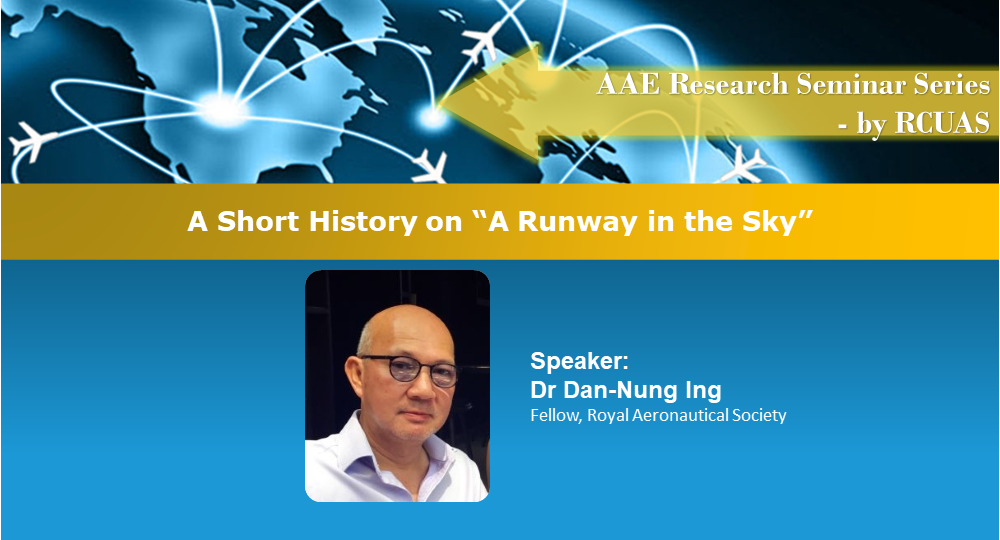A Short History on “A Runway in the Sky”
Seminar

-
Date
17 Nov 2023
-
Organiser
Department of Aeronautical and Aviation Engineering
-
Time
10:30 - 11:30
-
Venue
FJ304 Map
Enquiry
General Office aae.info@polyu.edu.hk
Summary
Abstract
In 1973, Lt Cdr Douglas Taylor of the Royal Navy published his MPhil thesis at Southampton University entitled “The operation of fixed-wing V/STOL aircraft from confined spaces”. This marked the birth of the ski-jump (滑躍甲板), which is now used in aircraft carriers. At the time of publishing, Doug was 44 years old, having joined the Royal Navy at the age of 16. The ski-jump has one main function: to increase the take-off weight of fixed-wing aircraft in shipborne operation. In this seminar, Dr Ing will discuss the individual effort to bring the ski-jump into reality, its concept, benefits, and a comparison to catapult launches.
In 1977, this concept was first tested on land. In 1979, a 12 degree ramp was installed in HMS Hermes. In 1980, a 7 degree ramp was installed in HMS Invincible. The ski-jump came just in time for the Falkland War (馬島戰役) in 1982. Since then all Royal Navy carriers have been fitted with ski-jump, including the latest HMS Queen Elizabeth and HMS Prince of Wales. Other countries such as Spain, Italy, Turkey, India, China and Russia, have also adopted this design.
The Harrier chief test pilot John Farley described the ski-jump as “the best example of a win-win design in the aerospace industry.”
Speaker
Dr Dan-Nung Ing was born in Hong Kong, and later moved to the UK after completing his secondary school education. Dr Ing graduated at Imperial College in 1973 with a BSc degree in Aeronautics, he continued his MSc degree at Southampton University on V/STOL aerodynamics and PhD degree on jet in crossflow. He was elected as a Fellow of the Royal Aeronautical Society (FRAeS) in 1994.
Dr Ing joined British Aerospace Dynamics Group (BAe) in 1980 and British Aerospace (aircraft group) in Kingston in 1983. He set up his own aerospace consultancy in 1985 and for the next 20 years his company was a subcontractor to BAe and the Ministry of Defence (MoD), specialising in vertical landing. In 1997, he obtained a US/UK patent for the “Ground Environment Mat”, which is a landing pad designed to reduce adverse ground effects during vertical landing.




